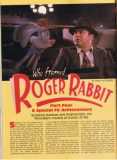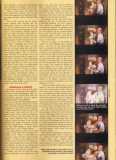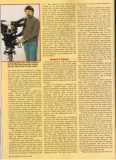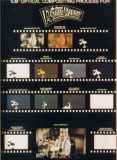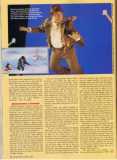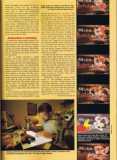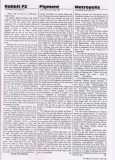Standing in on the live-action set for the animated characters of Who Framed Roger Rabbit were a number of full-scale rubber dummies of Roger, the weasels, and the rest of the Toons. Before the final take, rehearsals were filmed with the live-action actors interacting with the rubber dummy characters. It was a technique that solved many problems. It gave the actors something to rehearse with and helped the cameraman frame up a shot. Later, the animators could refer to the filmed rehearsals, so that they could be certain of the size of the animated character in the shot. The rubber dummies also established perspective for the animators.
"You would be surprised," says Richard Williams, "when a character's head comes toward the lens, how far forward it appears. Animators tend to be very conventional, but we found that not only were we dealing with
squash and stretch, but we had to worry about push and pull as well. The Toons had to occupy space and move in depth like the live-action actors."
The rehearsal footage also served as a lighting reference for the effects animators. By watching the rubber dummy move through the scene, they could tell what the light sources were and how the shadows moved over the characters. Of course, the actual character animation was a good deal more complex than the rehearsal footage, but at least a starting point was established. When the character animator was finished with a scene, all of the drawings and the background photostats were passed on to an effects animator, who created the shadow and highlight mattes for each animated character. In a live-action movie, the interplay of light and shadow can become extraordinarily complex; keeping Roger and his Toon pals looking as if they were working on the set meant that someone had to add all those little details of light and shadow to match the live action. So, the effects animators had to create more drawings for each animated Toon — a great many more drawings — so that they would appear fully rounded with highlights and shadows like their human counterparts in the scene.
[…]
